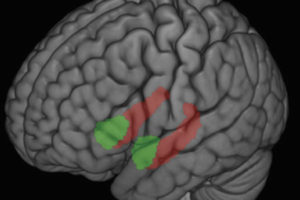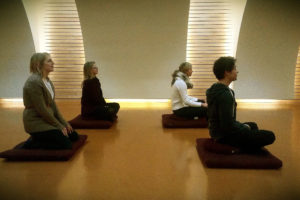Teachers who practice “mindfulness” are better able to reduce their own levels of stress and prevent burnout, according to a new study conducted by the Center for Healthy Minds.
The results of the study, led by Assistant Scientist Lisa Flook, were recently published in the journal Mind, Brain and Education.
Mindfulness, a notion that stems from centuries-old meditative traditions and is now taught in a secular way, is a technique to heighten attention, empathy and other pro-social emotions through an awareness of thoughts, external stimuli, or bodily sensations such as breath.
While teachers play a critical role in nurturing children’s well-being, progress in addressing teacher stress has been elusive. Stress and burnout among teachers is a major concern for school districts nationwide, affecting the quality of education and incurring increased costs in recruiting and sustaining teachers.
For the study, a group of 18 teachers was recruited to take part in a Mindfulness-Based Stress Reduction (MBSR) course, a well-established and well-studied method of mindfulness training. The project team adapted the MBSR training to fit the particular needs and time demands of elementary school teachers. It was among the first efforts to train teachers, in addition to students, in mindfulness techniques and to examine the effects of this training in the classroom.
“We wanted to offer training to teachers in a format that would be engaging and address the concerns that were specifically relevant to their role as teachers,” says Flook, who has advanced degrees in education and psychology and whose primary interest is in exploring strategies to reduce stress and promote well-being in children and adolescents.
The teachers who received the training were randomly assigned and asked to practice a guided meditation at home for at least 15 minutes per day. They also learned to use specific strategies for preventing and dealing with stressors in the classroom, such as “dropping in,” a term to describe the process of bringing attention to the sensations of breath and other physical sensations, thoughts, and emotions for brief periods of time. The training also included caring practices to bring kind awareness to their experiences, especially those that are challenging.






